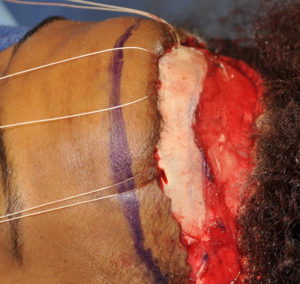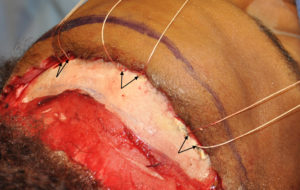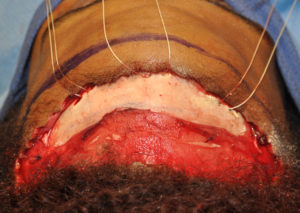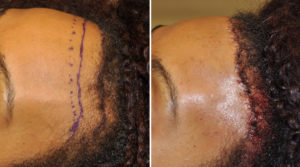Vertical forehead reduction is a soft tissue forehead reshaping procedure that shortens the distance between the frontal hairline and the eyebrows. It does so through a combination of forehead skin removal and hair-bearing scalp advancement. It also needs to do so without causing substantial brow elevation (unless that is desired) as well as prevention of undue tension on the incisional closure to avoid wide scarring and hair loss.
In most frontal hairline advancements the goal is often to achieve maximal movement of the hairline forward. (technically downward as well) Typical advancement distances are usually in the range of 10 to 15mms at a minimum. While complete undermining of the scalp back to the occiput provides the much needed tissue mobilization, the skin closure is never completely tension free.


Dr. Barry Eppley
Indianapolis, Indiana






